The American Civil War began in 1861, a battle fought between the Union (North) and the Confederacy (South), that was waged for four years. What began as a battle for reunification on the part of the Union and independence on the part of the Confederacy, evolved into a conflict over the economics of slavery and political control. It was not only the deadliest war fought on American soil but in the history of the country.
Over four years, there were roughly 10,500 battles fought, 50 of them major, and 100 quite significant. More than 600,000 soldiers were lost in battle, a greater number than in both World Wars combined. When the Civil War began, photography was a relatively new medium, yet, when America’s bloodiest conflict ended, it had become the first major conflict to be extensively photographed and marked the beginning of photojournalism. These horrifying Civil War images illustrated how truly devastating war can be. (Here are cities and towns demolished during the Civil War)
The public’s knowledge of war was once limited to written newspaper accounts and drawings until photography came along and captured what happened on the battlefield. There were over 3,000 photographers involved in capturing the horrors of almost every battle, both minor and major. Actual images of the gruesome results of war changed the public’s perception of war forever. The photos of Civil War casualties were the shocking result of what some historians called the first modern war because the Industrial Revolution had produced the machinery of death on an unprecedented scale.
24/7 Tempo reviewed historical archives from Getty Images and Wikimedia Commons to assemble a collection of chilling images from the American Civil War. The scope of images ranges from horrifying to those chronicling everyday life during the war. The photographers’ work represented here – Matthew Brady, Alexander Gardner, and George Barnard – formed a team to record images of the war.
Besides shooting portraits of Union soldiers, President Abraham Lincoln on horseback, and officers weighing strategy in tents, they also photographed the war in all its hellish fury. In an exhibition held in New York just one month after the war, their photos of dead soldiers on the battlefield in the aftermath of the 1862 Battle of Antietam were shown and shocked the public. One image was chosen by Time magazine as one of the most influential images of all time.
Here are chilling images from the American Civil War.
Union troops drilling

- Date: March 1862
- Location: near Washington, D.C.
Troops of the 96th Regiment, Pennsylvania Infantry, drill at Camp Northumberland near Washington, D.C. Tasked with defending the nation’s capital until March 1862, they would later participate in the major battles of Antietam and Gettysburg, among other engagements.
The Confederate flag over Fort Sumter
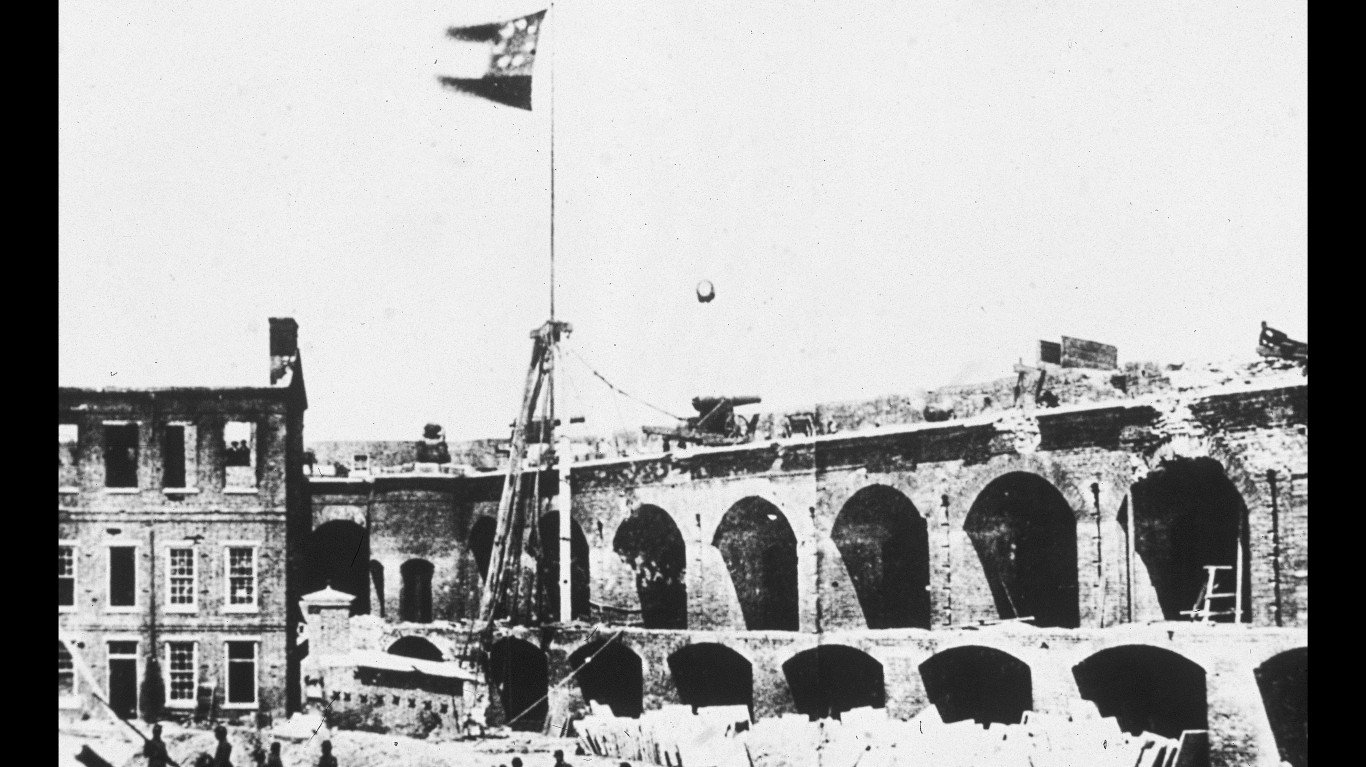
- Date: 1861
- Location: South Carolina
The First National Flag of the Confederacy – as opposed to the familiar X-crossed banner commonly called the Confederate flag – flies over this Union stronghold in Charleston Harbor after it surrendered to the Rebels following bombardment by the South Carolina Militia, in what is considered the first shots of the Civil War.
A Rebel bunker

- Date: circa 1863
- Location: Georgia
Union troops occupied Confederate bunker defenses outside Atlanta, a vital transportation and manufacturing hub for the Rebels.
Union dugouts

- Date: 1863
- Location: Mississippi
The Union Army in fortified positions on a hillside during the siege of Vicksburg.
Standing guard
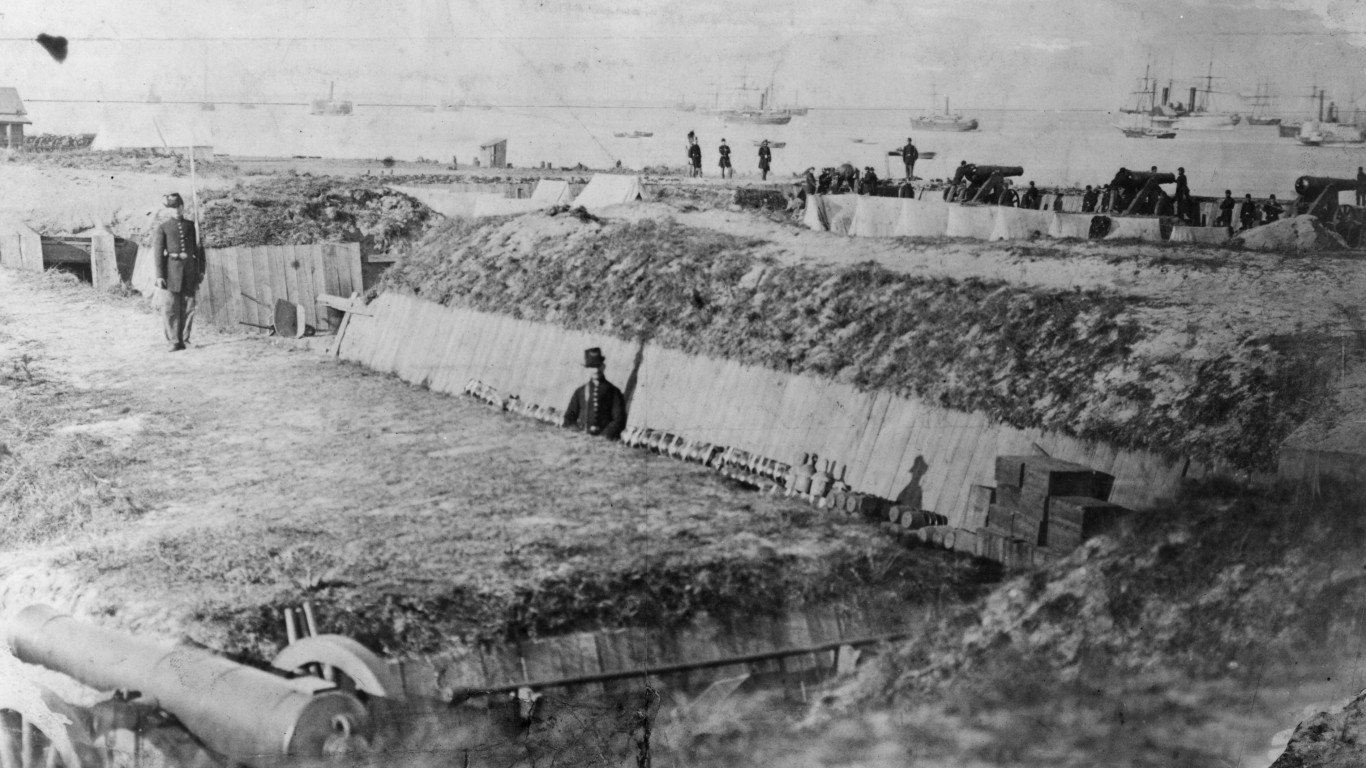
- Date: 1861
- Location: South Carolina
Confederate soldiers standing guard at Fort Walker on Hilton Head. It was a fort hastily built by slave labor to guard the entrance to Port Royal Sound.
Working on a stockade
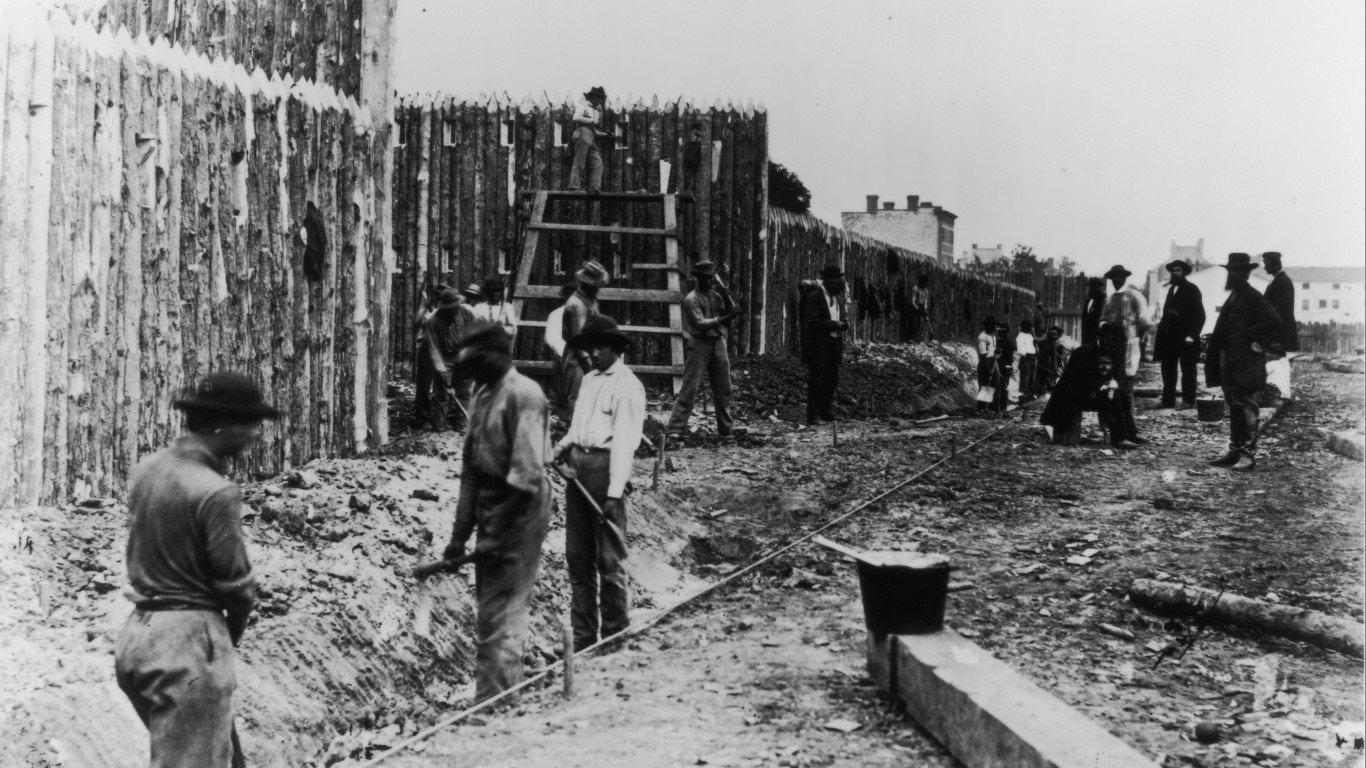
- Date: circa 1864
- Location: Virginia
Black laborers digging a trench in front of a new stockade in Alexandria, possibly formerly enslaved men who’d fled there after the city was occupied by Union troops and found paid work.
Damaged lighthouse
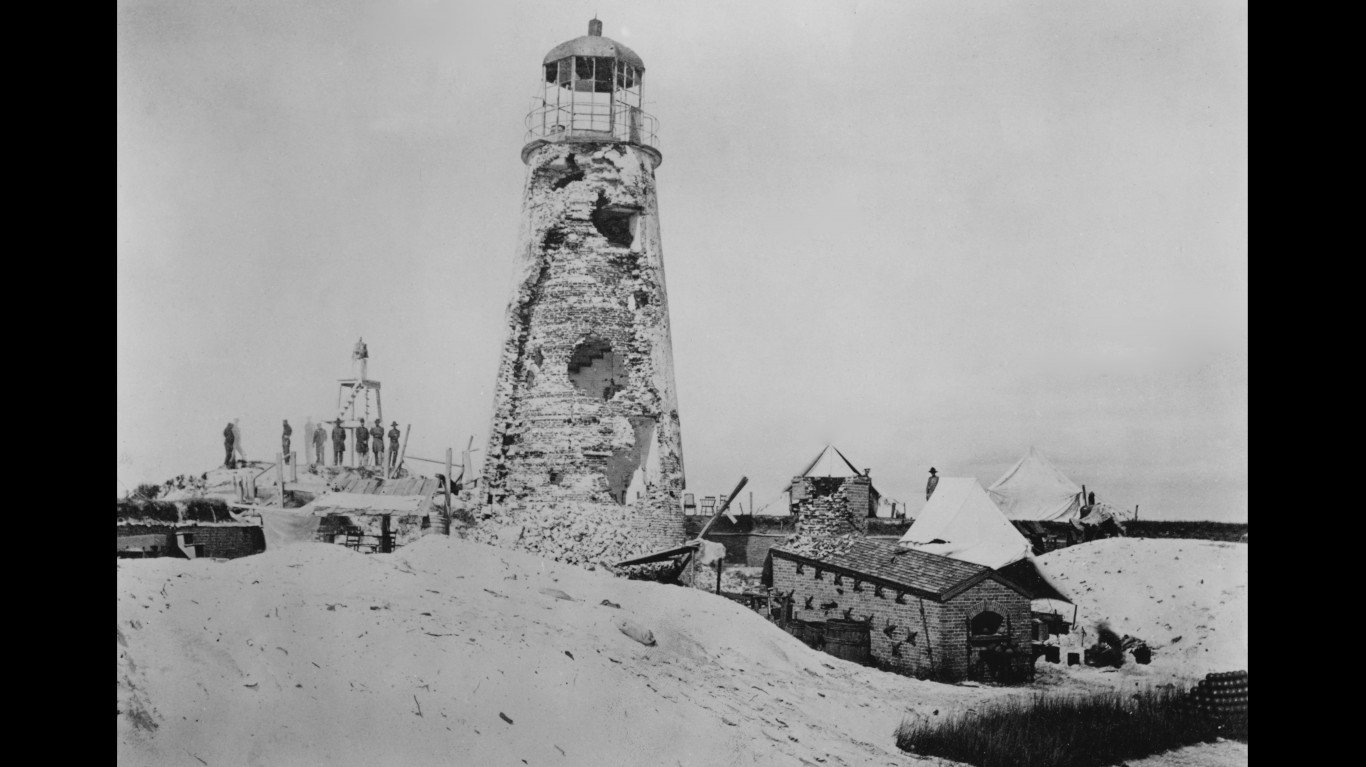
- Date: August 5, 1864
- Location: Alabama
The ruins of a lighthouse in the aftermath of the Battle of Mobile Bay. This battle was considered a major victory for the Union since Mobile was the largest Southern port they captured after New Orleans.
Richmond in ruins
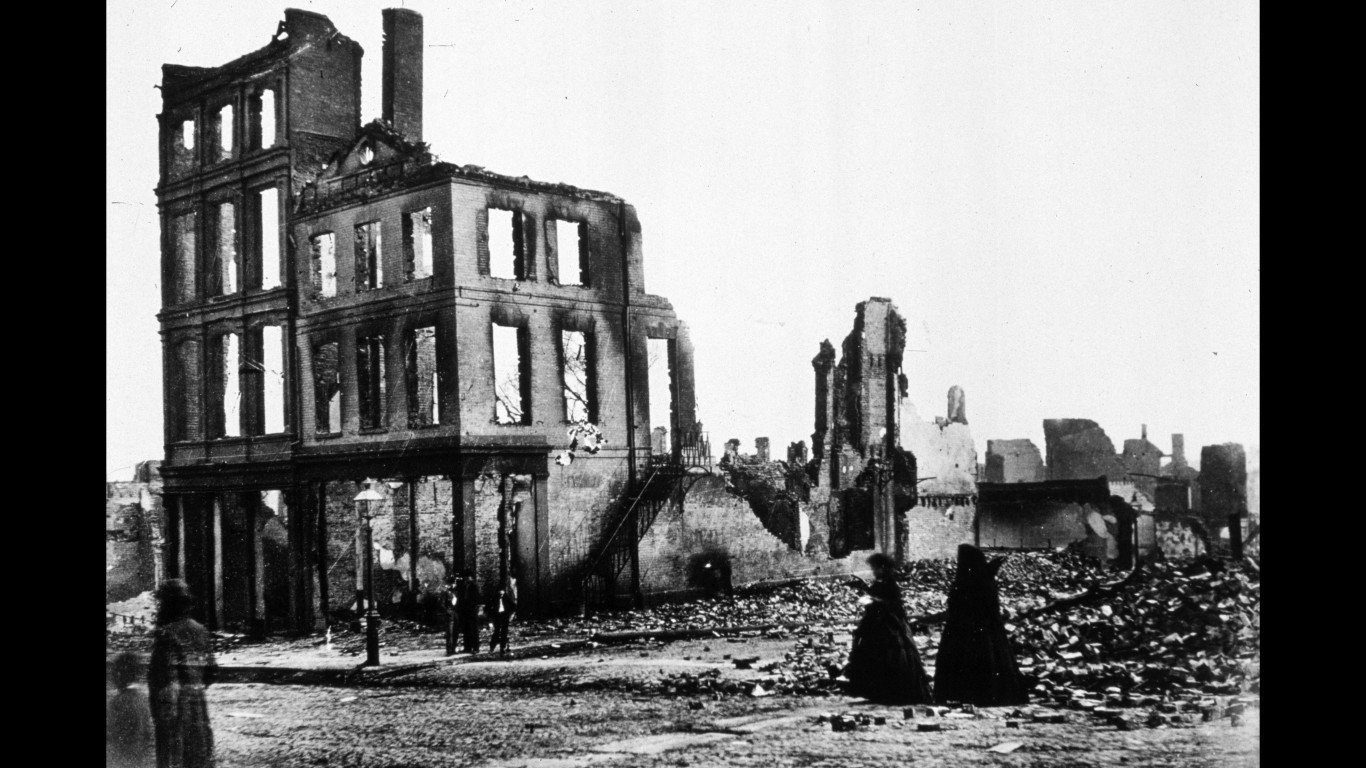
- Date: 1865
- Location: Virginia
Burnt-out and demolished buildings in Richmond, the capital of the Confederacy.
Hanging a Confederate war criminal
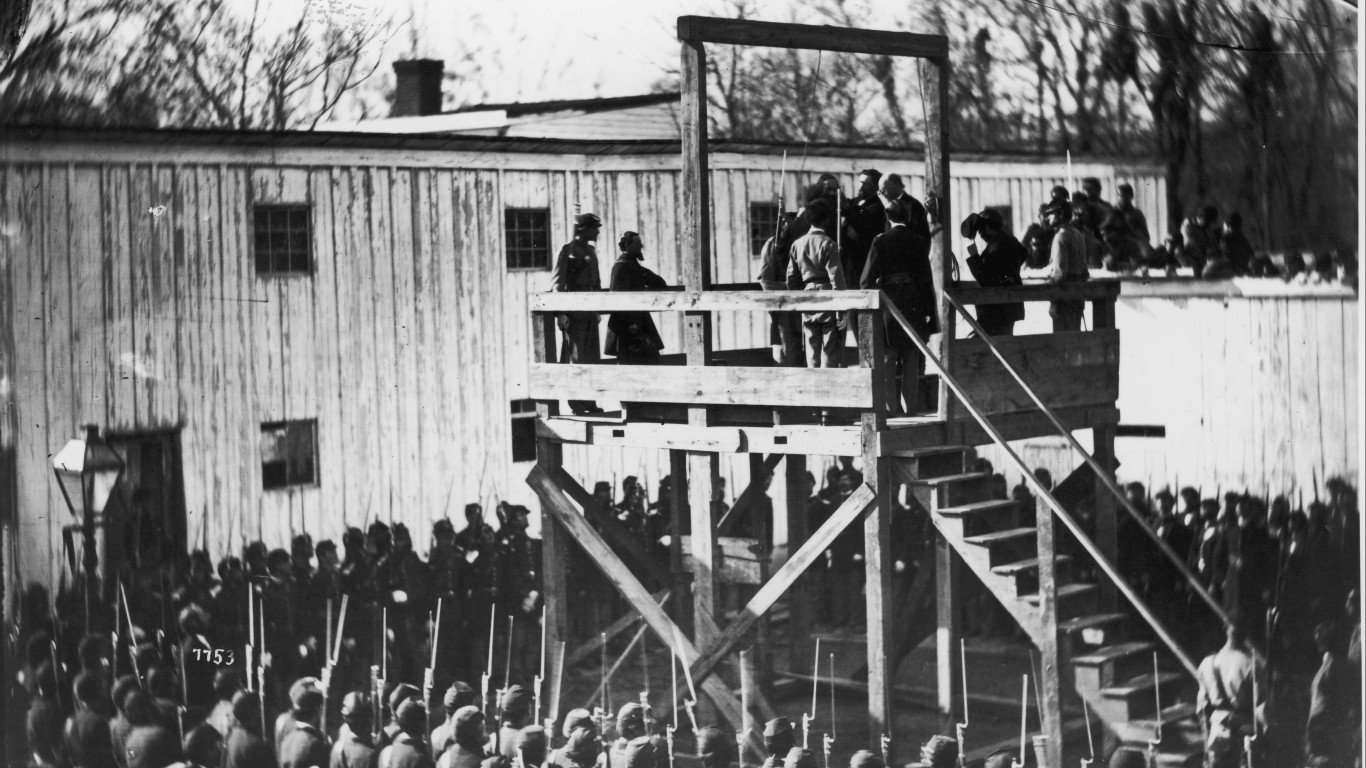
- Date: November 10, 1865
- Location: Georgia
Heinrich (Henry) Wirz commanded the infamous Confederate prison camp in Andersonville, in which nearly 13,000 Union soldiers died under horrific conditions. He was hanged in Washington, D.C. for conspiracy and murder.
The Potomac Creek Bridge
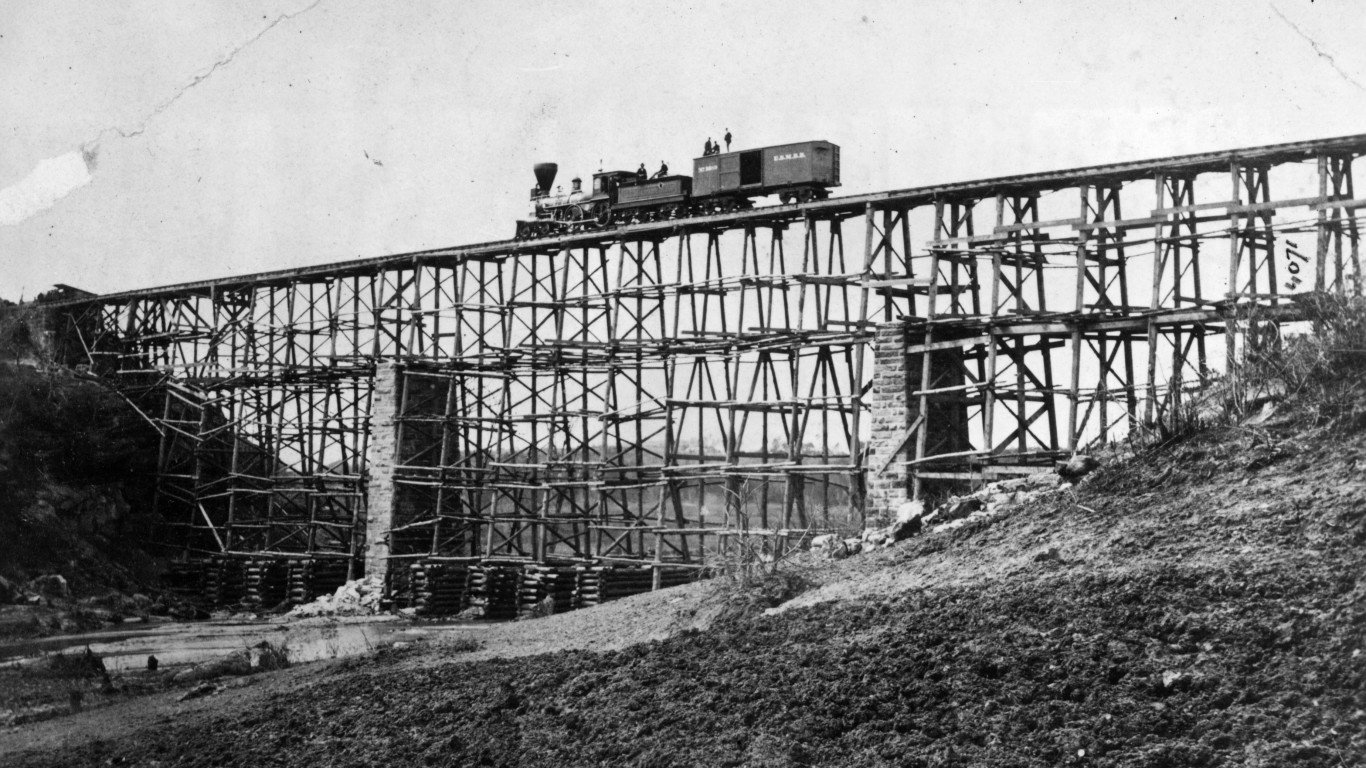
- Date: May 1862
- Location: Virginia
The Potomac Creek Bridge in Stafford County was built in nine days by Union troops under the supervision of engineer Herman Haupt. This photograph was taken by legendary photographer Mathew Brady.
Washington Arsenal
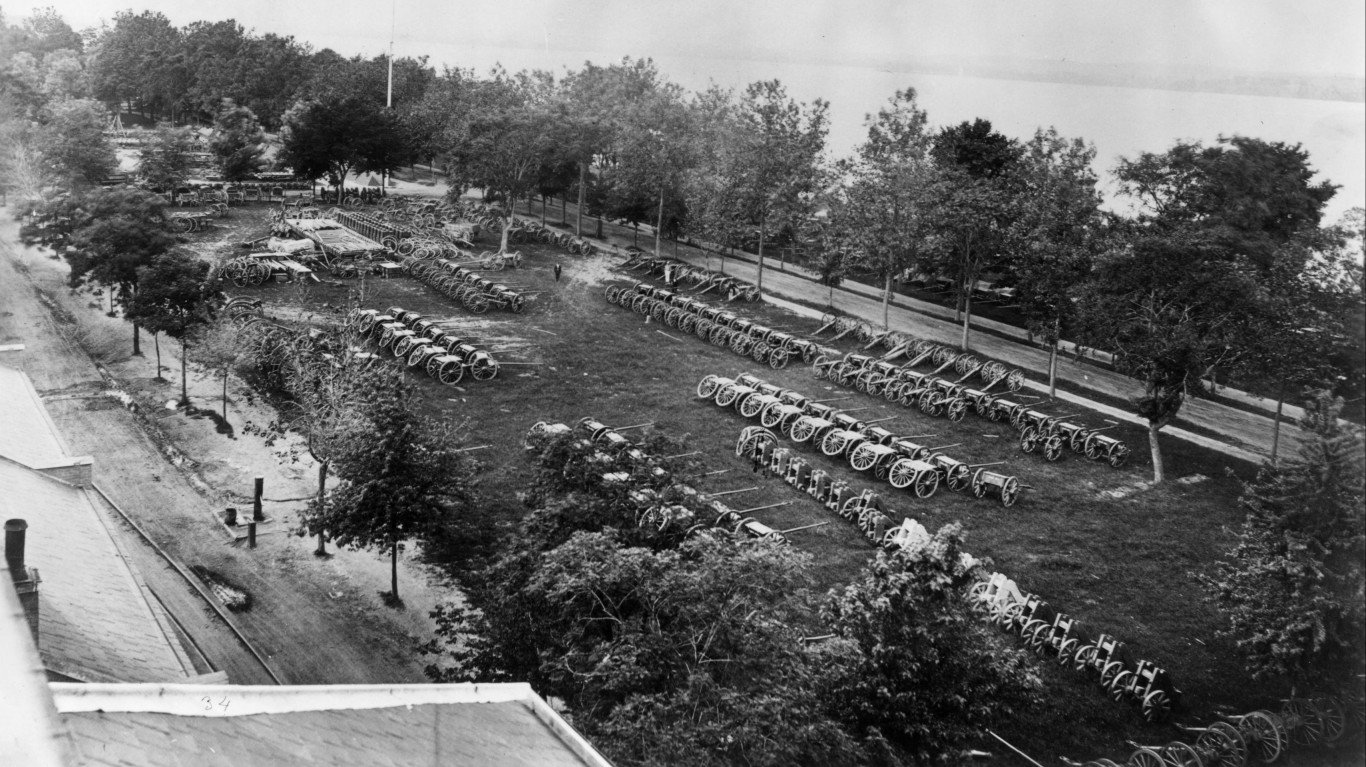
- Date: circa 1861
- Location: Washington, D.C.
Washington Arsenal (now Fort Lesley J. McNair) on Greenleaf Point, near the junction of the Anacostia River and the Washington Channel in the nation’s capital.
Slave cells
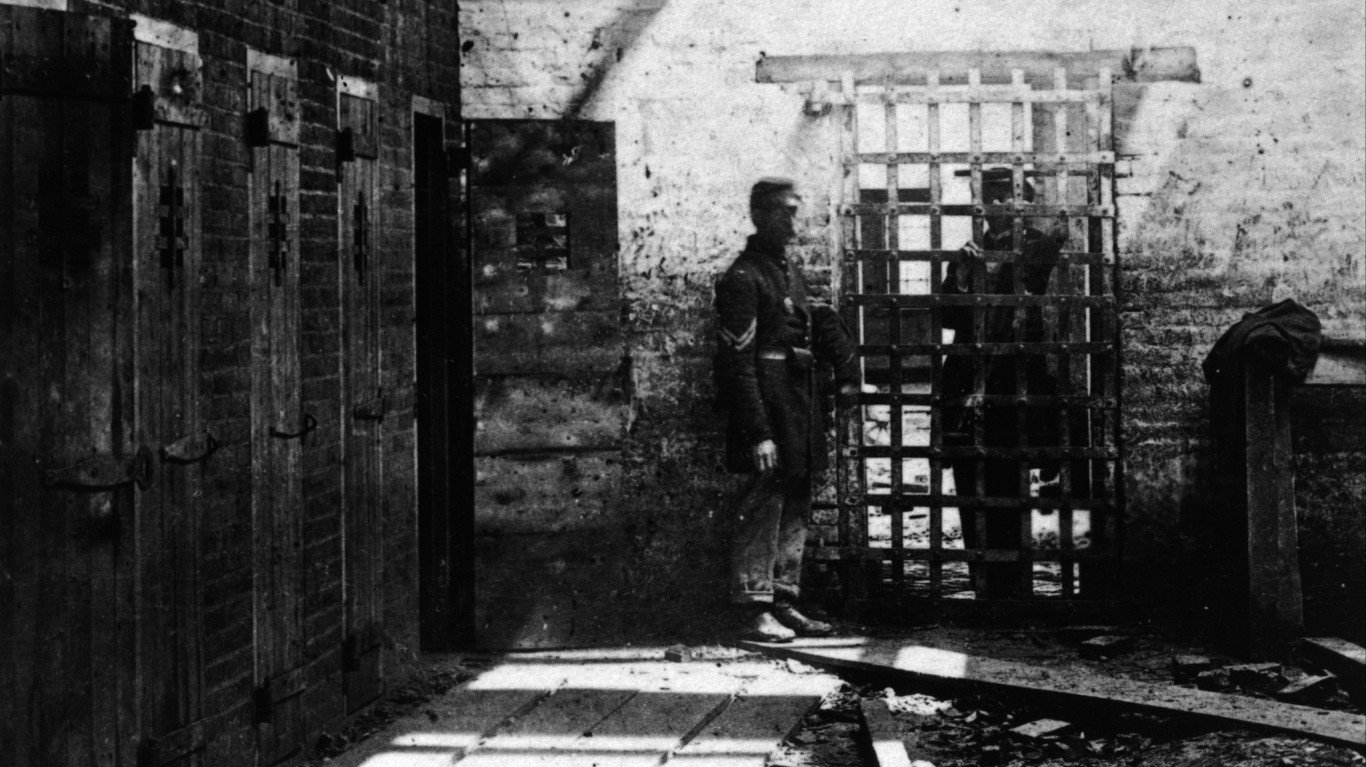
- Date: circa 1861
- Location: Virginia
Two Union soldiers stand beside slave pen cells in Alexandria, a major slave trafficking center before the Civil War and the first Southern city taken by Union troops.
Battle of Fredericksburg
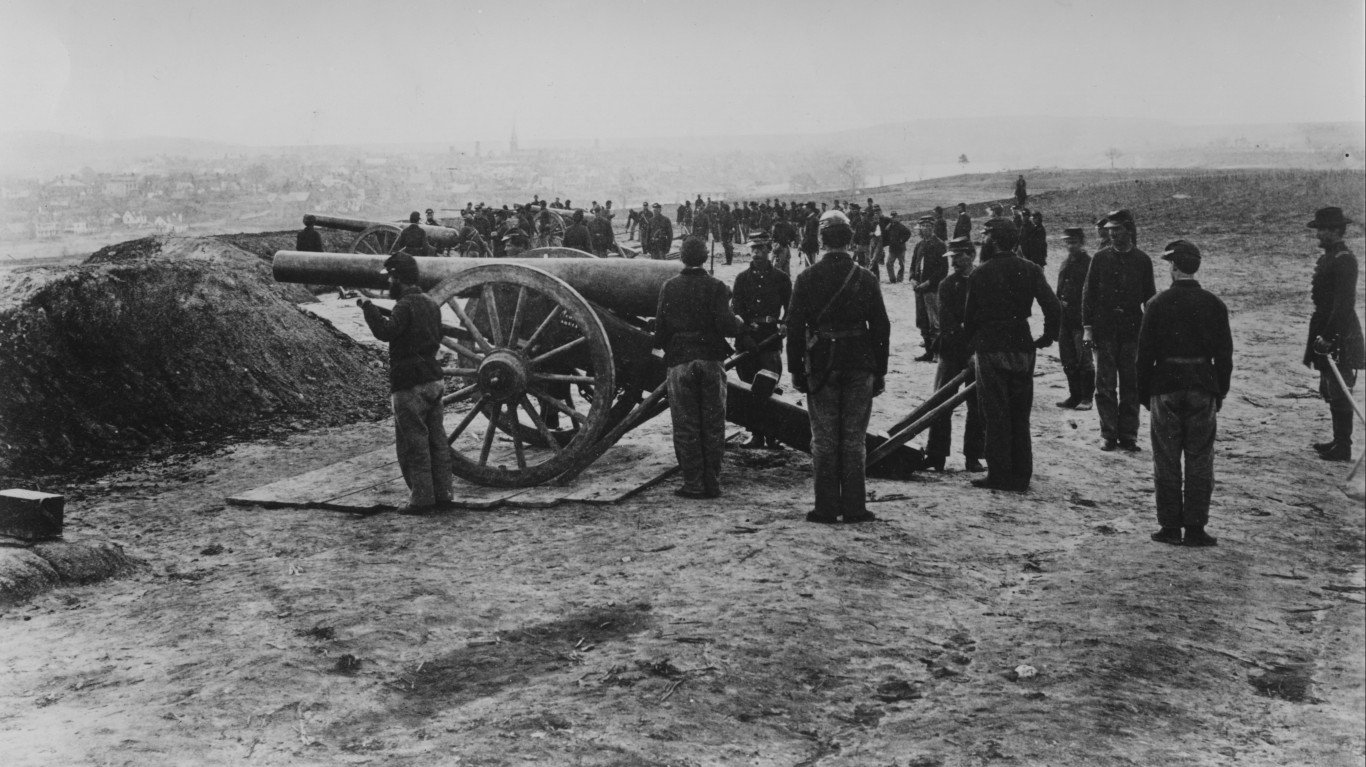
- Date: December 1862
- Location: Virginia
A Union Army battery makes final preparations on the day before the Battle of Fredericksburg, which proved to be one of the most disastrous defeats for the Union during the Civil War.
A barracks turned prisoner of war camp
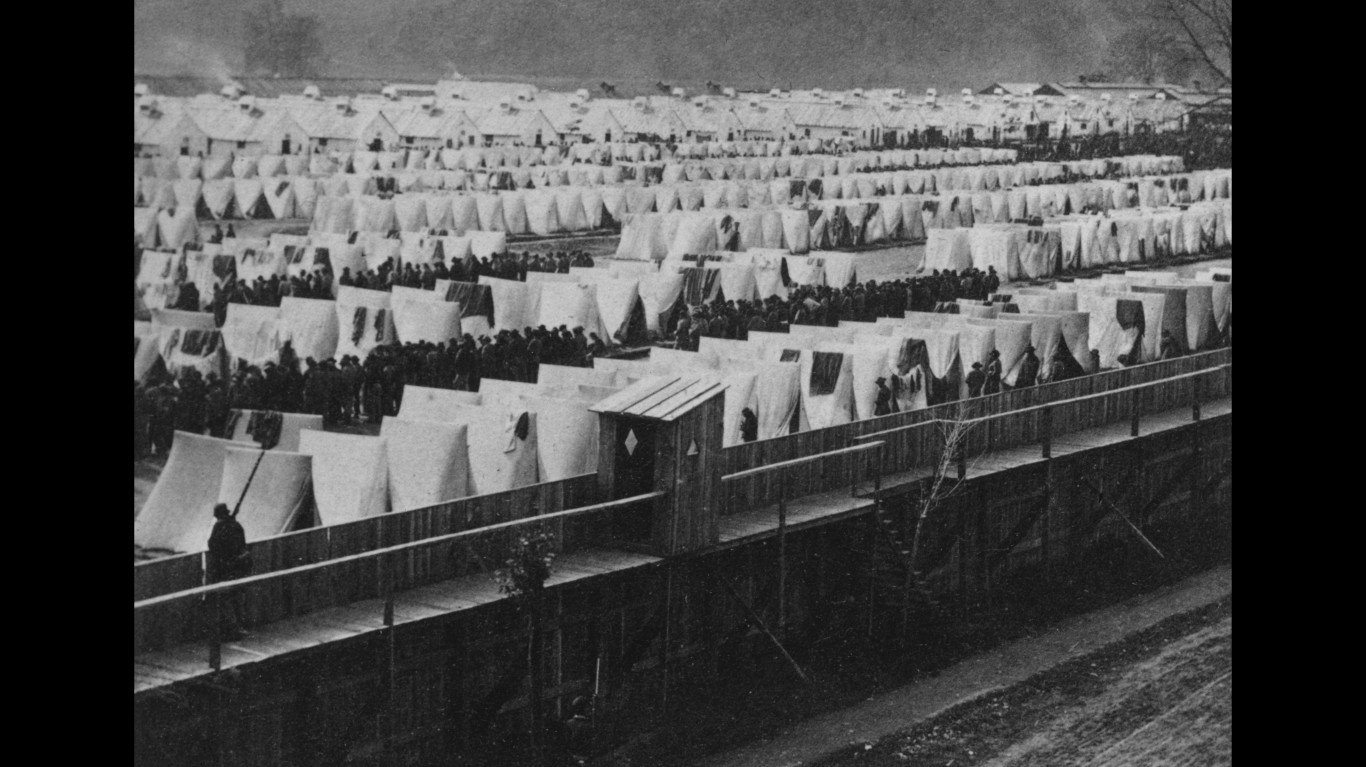
- Date: Summer 1864
- Location: New York
The one-time Camp Rathbun in Elmira fell into disuse as a training center as the war progressed and became a prison camp for captured Confederates.
A broken cartwheel
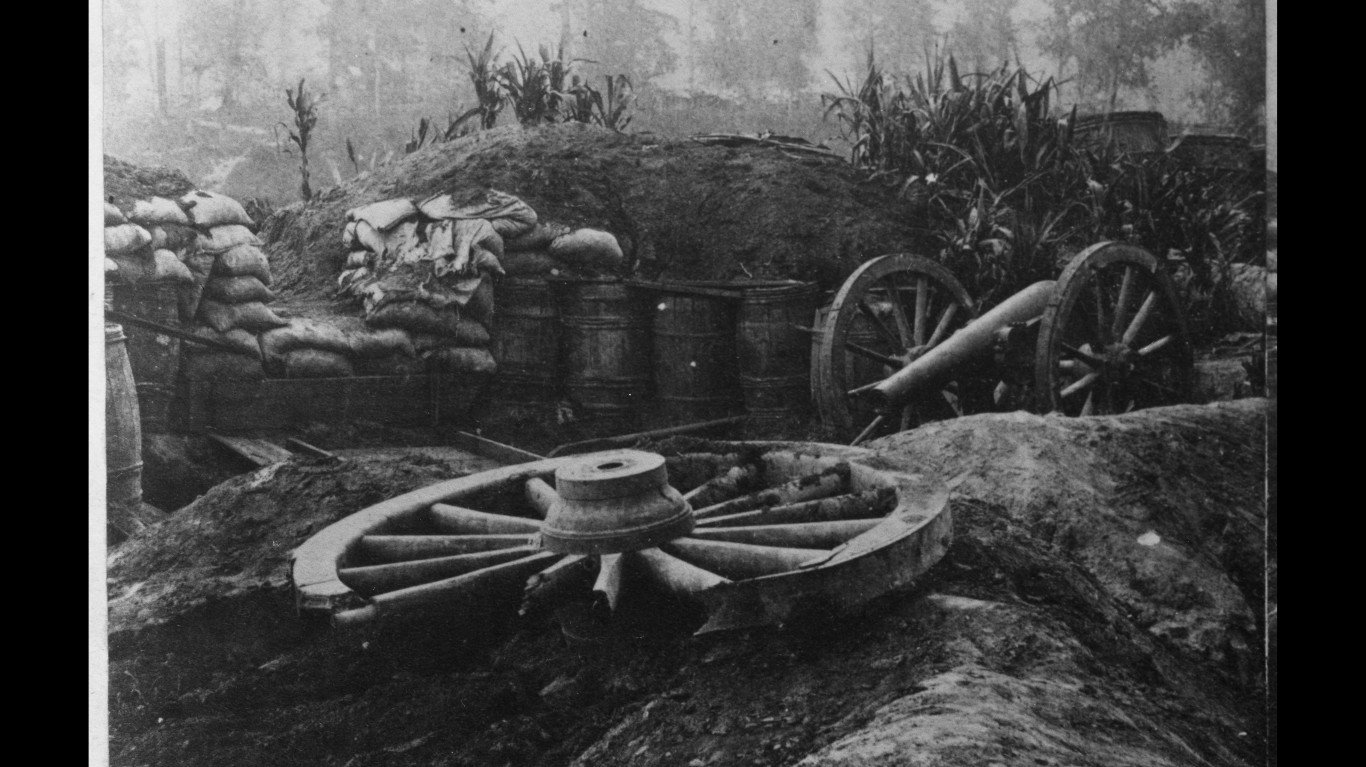
- Date: 1863
- Location: Unknown
A broken cartwheel with an abandoned cannon nearby on a battlefield.
